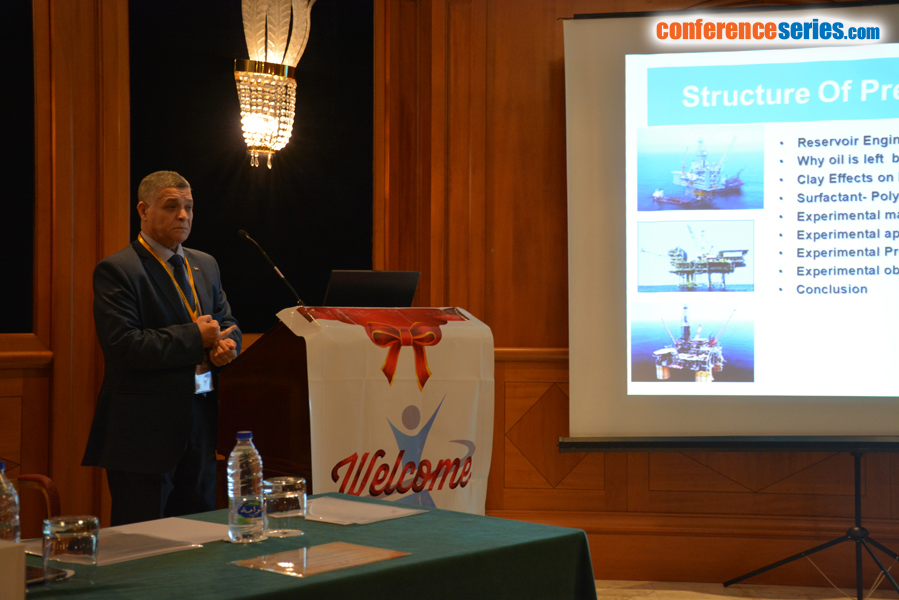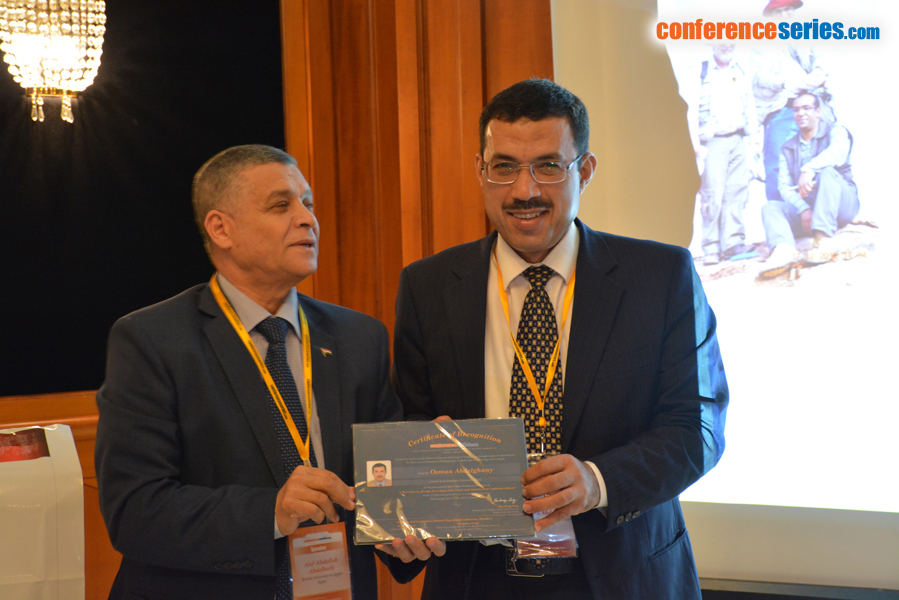
Atef Abdullah Abdelhady
British University in Egypt, Egypt
Title: Influence of clay content on surfactant-polymer flooding for an Egyptian oil field
Biography
Biography: Atef Abdullah Abdelhady
Abstract
Oil recovery after water flood, by surfactant-polymer flooding at different percentages of clay content, has been studied for July oil field. Formation water (72000 ppm) and crude oil of the July field have been used; the study was performed on Mesh to represent the porous field. Bentonite, colloidal sand packs media of clay from Wyoming Company, dispersion into USA, has been used as sand-packs. Dowell EZEFLO and polyacrylamide were used. This study concentrates on clay surfactant, F-75, this study effect of sur-in the various percentages of clay content (0%, 3.5%, 5%, tertiary oil 10%, 15% and 20%) on recovery. The effect of secondary and of surfactant concentration on tertiary oil recovery at the mentioned clay content values has been also studied to determine the maximum ultimate oil recovery for each case. The experimental results show that, the major factor affecting tertiary oil recovery by surfactant-polymer method is the surfactant concentration; the recovery is improved as the concentration increased; for any clay content, as the surfactant concentration increases the oil production starts sooner (earlier breakthrough) and sustains at higher level; for clay content less than 10 % it is more efficient to use a large pore volume of surfactant slug with low concentration; for oil value of clay content more than 15%, the recovery increases with increasing surfactant concentration up to the value of 4% and after that, the recovery decreases. Thus this value (4%) is taken as the optimum value of surfactant concentration in this case and for any slug concentration, as the clay content increases, the oil breakthrough is delayed.
Speaker Presentations
Speaker PDFs
Speaker PPTs Click Here



